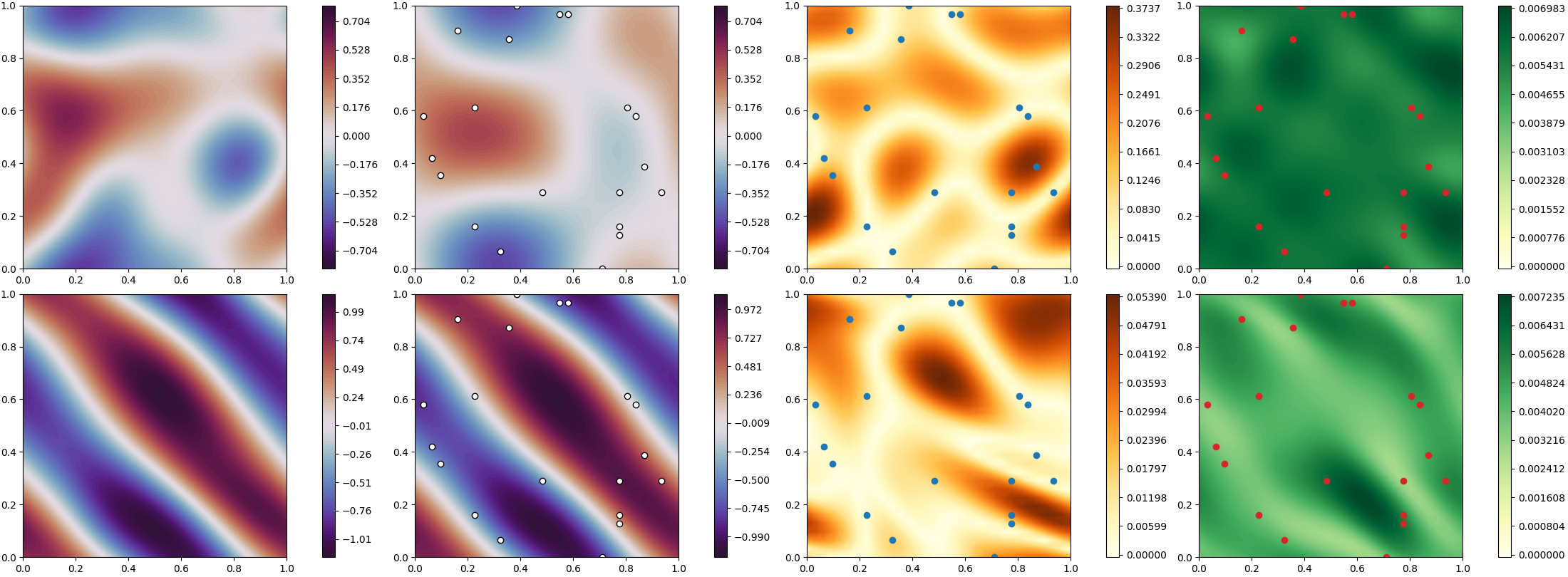Uncertainty Quantification for Deep Learning
Uncertainty Quantification for Deep Learning
Model-constrained deep neural networks are capable of learning from both training data and the mathematical models governing a phenomenon of interest; these methods have direct applicability to inverse problems. In this project we extend model-constrained deep neural networks to a model-constrained Bayesian neural network (MCBNN) form, facilitating the solution of inverse problems while simultaneously quantifying uncertainty in a physically interpretable manner. We produce MCBNN forms for a single network learning the inverse map, as well as autoencoders learning both the forward and inverse maps simultaneously. In addition, we have a form of MCBNN which learns a Tikhonov inverse solver with quantified uncertainty. Furthermore, novel training methods for MCBNN allow us to sidestep the common Bayesian issue of defining a prior for the Bayesian neural network parameters by eliciting a physical prior in the network parameter space.
Results
We are testing the performance of MCBNN by solving three inverse problems governed by Poisson’s equation, Burger’s equation, and the Navier-Stokes equations’, respectively. The below figure demonstrates basic qualitative results for one case when solving the Poisson inversion with increasing numbers of observation points, illustrating the predictive accuracy of MCBNN, as well as the uncertainty quantification capability of MCBNN. Furthermore, the both the predictive error and uncertainty tend to concentrate in regions without observations as we add more observations into the domain.

Figure 1: PDE parameters solved when inverting the Poisson equation. From left to right; true solution, predicted solution, absolute error of prediction, standard deviation of prediction. From top to bottom; 5 observations, 10 observations, 50 observations. Observation locations indicated by dots.
Additionally, we show qualitative results for an inversion of the Navier-Stokes equation here.

Figure 2: Initial conditions solved when inverting the Navier-Stokes equation. From left to right; true solution, predicted solution, absolute error of prediction, standard deviation of prediction. From top to bottom; initial condition, terminal condition. Observation locations indicated by dots.